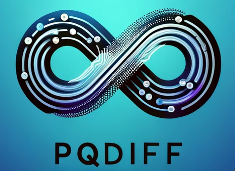Continuous-Multiple Image Outpainting in One-Step via Positional Query and A Diffusion-based Approach
Image outpainting aims to generate the content of an input sub-image beyond its original boundaries. It is an important task in content generation yet remains an open problem for generative models. This paper pushes the technical frontier of image outpainting in two directions that have not been resolved in literature: 1) outpainting with arbitrary and continuous multiples (without restriction), and 2) outpainting in a single step (even for large expansion multiples). Moreover, we develop a method that does not depend on a pre-trained backbone network, which is in contrast commonly required by the previous SOTA outpainting methods. The arbitrary multiple outpainting is achieved by utilizing randomly cropped views from the same image during training to capture arbitrary relative positional information. Specifically, by feeding one view and positional embeddings as queries, we can reconstruct another view. At inference, we generate images with arbitrary expansion multiples by inputting an anchor image and its corresponding positional embeddings. The one-step outpainting ability here is particularly noteworthy in contrast to previous methods that need to be performed for $N$ times to obtain a final multiple which is $N$ times of its basic and fixed multiple. We evaluate the proposed approach (called PQDiff as we adopt a diffusion-based generator as our embodiment, under our proposed \textbf{P}ositional \textbf{Q}uery scheme) on public benchmarks, demonstrating its superior performance over state-of-the-art approaches. Specifically, PQDiff achieves state-of-the-art FID scores on the Scenery (\textbf{21.512}), Building Facades (\textbf{25.310}), and WikiArts (\textbf{36.212}) datasets. Furthermore, under the 2.25x, 5x and 11.7x outpainting settings, PQDiff only takes \textbf{40.6\%}, \textbf{20.3\%} and \textbf{10.2\%} of the time of the benchmark state-of-the-art (SOTA) method.
PDF Abstract

